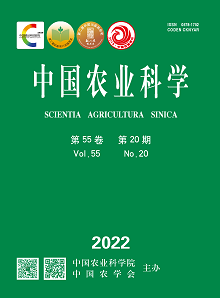【Objective】 The epidemiological characteristics of H9N2 avian influenza virus were clarified by analyzing the onset time, province, age, gender and other information of human cases infected with H9N2 avian influenza from 1998 to 2021 in China. By analyzing the genetic characteristics of human H9N2 subtype avian influenza virus, the genetic evolution law of human H9N2 subtype avian influenza virus was elucidated. This study could provide data support for the early warning and control of H9N2 subtype avian influenza virus cross-species transmission. 【Method】 According to the case report, literature data and gene bank, the case information and strain sequence data of human infection with H9N2 subtype avian influenza virus in China from 1998 to 2021 were obtained. The infection cases were analyzed from the time distribution, space distribution, gender and age distribution, and the epidemiological characteristics of human-derived H9N2 subtype avian influenza virus infection were found. The MegAlign software in DNASTAR were used to analyze Nucleotide sequence of the homology of various gene fragments of human H9N2 isolates, a phylogenetic tree was constructed by MEGA7.0 software, and the key sites of viral proteins were analyzed. The genetic evolution trend of viral proteins and the variation of key amino acid sites were clarified. The 2019-2021 H9N2 subtype avian influenza virus nucleotide sequence in China was downloaded from the GISAID website. After mafft alignment, the key amino acid site mutation differences between human and avian H9N2 viruses were examined in MEGA7.0, the potential risks brought by current human and avian H9N2 viruses were revealed. 【Result】 From1998 to 2021, a total of 71 cases of human infection with the H9N2 subtype avian influenza virus occurred in China. From the spatial distribution analysis, the cases were distributed in 16 provinces and cities, of which 91.55% of the cases were from 12 provinces and cities in the south. In terms of time, the number of reported infections has been on the rise after 2013, and the cumulative number of infections from 2013 to 2021 accounted for 61.97% of the total number of infections. From the analysis of gender and age distribution, the ratio of male to female was 1:1.68. Human infection with H9N2 virus was mainly seen in infants and young children, accounting for 74.14% of the total number of cases. Genome comparison analysis of human H9N2 viruses found that these viruses belonged to the Eurasian branch, but the nucleotide sequence of homology of these viruses gene fragments was quite different. The nucleotide homology of HA, NA, PB2, PB1, PA, NP, M, and NS were 75.3%-100%, 80.1%-100%, 78.7%-100%, 82.5%-100%, 72.6%-100%, 74.1 -100%, 65.5%-100%, and 82.0%-100%, respectively. According to the genealogy of human isolates, 22 human isolates with complete gene fragments could be divided into 8 genotypes, genotypes in 2003, 2008, and 2013 were significantly different from genotypes in 1999. A total of 42 human H9N2 virus strains uploaded HA sequences from 1998 to 2021, and 38 of them had the mutation of Q226L in the HA protein; a total of 30 human virus strains uploaded PB2 sequence from 1998 to 2021, and 9 strains of which had the mutation of E627V in the PB2 protein, 1 of which had the mutation of E627K in the PB2 protein; the 701 site of the PB2 protein of one virus had the mutation of D701N, a total of 31 virus strains uploaded NS and M sequence from 1998 to 2021, the 42nd positions of the NS1 protein were all S, and the amino acids at positions 30th and 215th of the M1 protein were D and A, respectively. 【Conclusion】 Since 2013, the number of human infections with H9N2 subtype avian influenza reported in China has been on the rise, with significant differences in geographic, age and gender distribution. Since 1998, the genetic homology between human H9N2 isolates was quite different, and the viral gene rearrangement between different branches was frequent, forming a complex genotype. It was suggested that the H9N2 subtype avian influenza virus was constantly evolving. Mutations in key amino acid sites of human H9N2 virus and mutation rate of human viruses was higher than avian H9N2 viruses from 2019 to 2021, suggesting that the potential of H9N2 subtype avian influenza virus to infect humans was gradually increasing. This result enriched the knowledge of human H9N2 virus and provided an important reference for the prevention and control of H9N2 subtype avian influenza virus.









